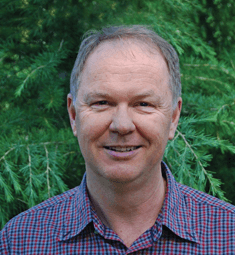
Anniversaries provide a stimulus for us to pause and reflect, not just on what has happened in the past, but in what ways those lived experiences have influenced how we think and the ways we behave during times of stress and when we may be in fear for our lives.
At the time, the fires on Black Saturday in February 2009 were said to have been ‘unprecedented’. In the last four months in Australia, we have had what are described as unprecedented fires in Queensland burning tropical rainforest and, in the Tasmanian wilderness areas, burning cool temperate rainforests. In the same period, there was massive flooding in Townsville and most recently, dual Category 4 cyclones simultaneously impacting on the north-east and northwest of the continent. All of this when Australia was experiencing massive droughts and recording record high temperatures.
There are two recurring themes from reviews of major disasters caused by natural hazards that affect public safety and preservation of life. These are the lack of acknowledgement or ‘ownership’ of real and present risks and an apparent unwillingness to agree with those around us (our partners, companions and family) on what we most value and what we want to protect. These factors underpin decision-making and contribute to the observed difficulties in making safe decisions in times of extreme stress. Until we as individuals and as a collective understand and own the risks that we are exposed to, we will continue to experience avoidable pain and suffering.
This issue of the Australian Journal of Emergency Management shines a spotlight on some of the significant changes, borne from hard-won experience, that are helping to reduce the effects of natural hazards. The stimulus that came from the Royal Commission into the Black Saturday bushfires has been significant, driving changes in how we approach messaging in warnings and other communications, and helping us understand what it means when someone makes a decision to stay and defend their property in the face of a massive firestorm. However, there is room for improvement in the levels of preparedness and planning if we are to minimise the short-and long-term impacts of major disasters caused by natural hazards on communities and environments. And more still needs to be done to understand why it seems so hard to avoid putting ourselves and those we love and care for in harm’s way by walking and driving through floodwater.
Our approaches to relief and recovery have improved and the work of the Australian Red Cross is an example of this. But perhaps we are not yet as well developed in the way we plan to support people with disabilities who can manage their lives under normal circumstances but are frequently disadvantaged in crowded or temporary accommodation.
While there is always room for improvement, it is also important to share and acknowledge the benefits of the stories and the knowledge that we have gained and learnt. That is where publications like this are so important. As Editor-in-Chief, I am constantly impressed with what is being done and proud that we can help communicate this important work.
Dr John Bates
Editor-in-Chief
Australian Journal of Emergency Management
Research Director
Bushfire and Natural Hazards CRC


